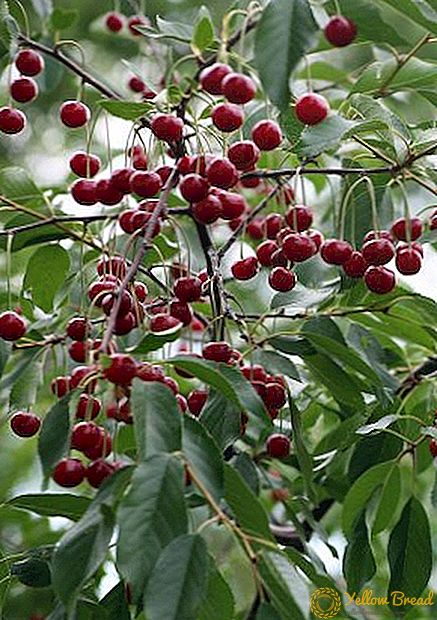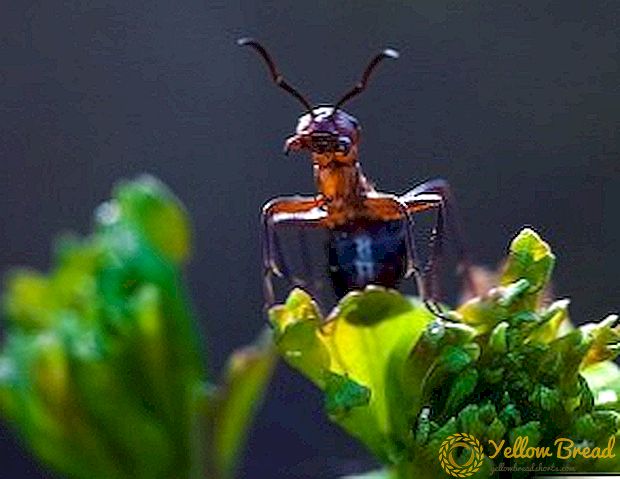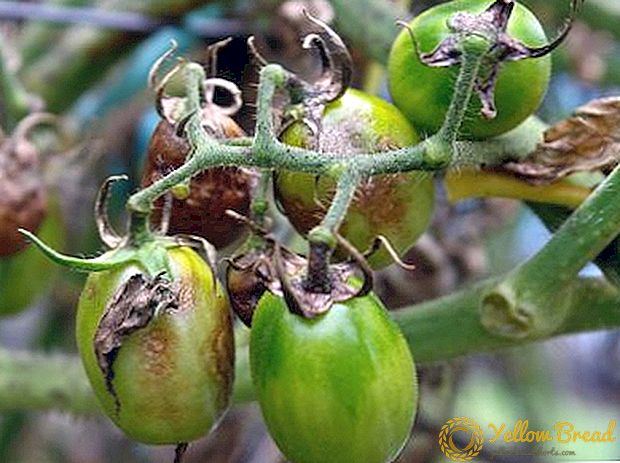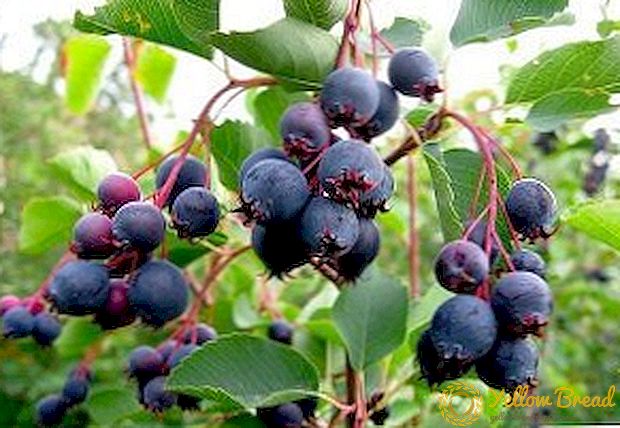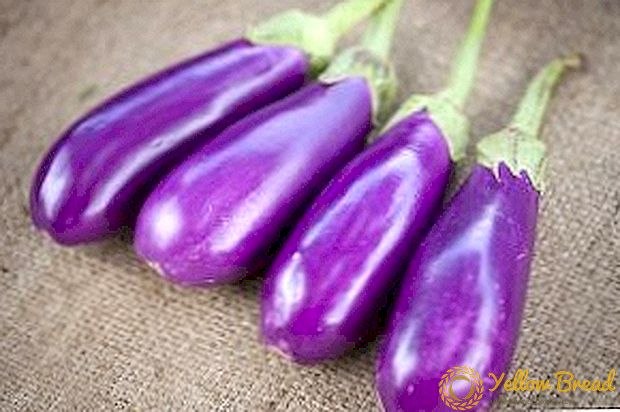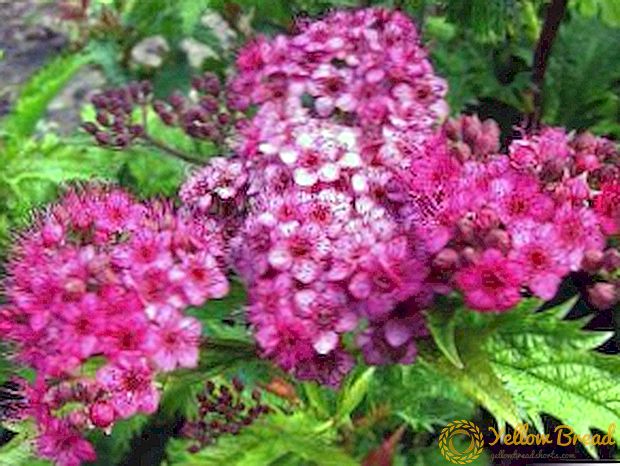 Often your attention to the city beds attracts a small ornamental shrub with crimson flowers and yellowish foliage. This is Japanese spirea. She took a worthy place in the decoration of urban beds and suburban areas due to its low cost, unpretentiousness and preservation of decorative qualities from spring to late autumn.
Often your attention to the city beds attracts a small ornamental shrub with crimson flowers and yellowish foliage. This is Japanese spirea. She took a worthy place in the decoration of urban beds and suburban areas due to its low cost, unpretentiousness and preservation of decorative qualities from spring to late autumn.
- Japanese spirea varieties
- Planting shrubs
- Proper care of Japanese spirea
- Watering and feeding
- Pruning plants
- Preparing for the winter
- Methods of breeding shrubs
- Reproduction by division
- Reproduction by cuttings
- Reproduction by layering
- Seed propagation
- Japanese Spirea pests and methods of controlling them
Japanese spirea varieties
Consider the most common types and varieties of spirea. Spireas are divided into two types: spring flowering and summer blooming. In spring-blooming spirea, the flowers are white, placed on last year's shoots, and in the summer-flowering sprouts, the flowers are pink-crimson and grow on young shoots. Therefore, they are sheared in different periods. The first - immediately after flowering, and the second - in the spring. Spring flowering bloom at the same time, but not for long, and letneretsvetushchy - have a prolonged flowering period.
There are many varieties of Japanese spirea. All of them differ in plant height, color of flowers and size of leaves. Consider the main varieties of Japanese spirea:
- "Golden Princess" (Golden Princess) - shrub no more than 50 cm tall with pink flowers and bright yellow leaves. Depending on the season, the leaves change shades.
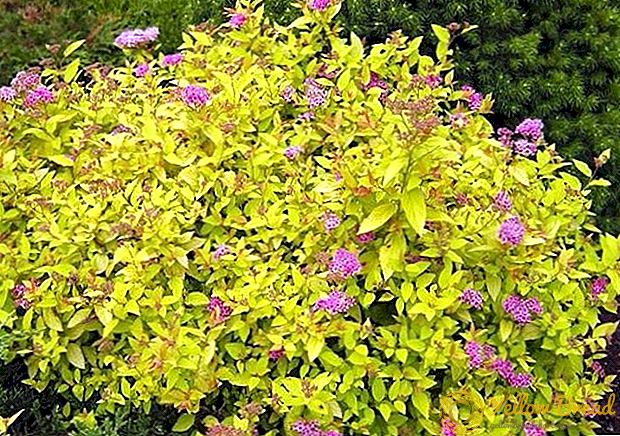
- "Little Princess" (Little Princess) - shrub up to 80 cm in height with dark green elliptic leaves and pink flowers, gathered in inflorescences. The flowering period is June - July. The crown is spherical. Mainly used for hedges.
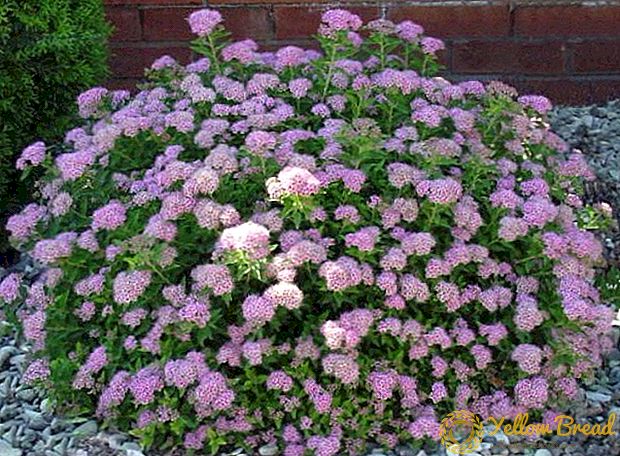
- "Gold Flame" - more powerful and growing in height up to 1 m shrub. With crimson flowers and leaves from orange-red to bright yellow. The shade of the leaves changes according to the time of year.
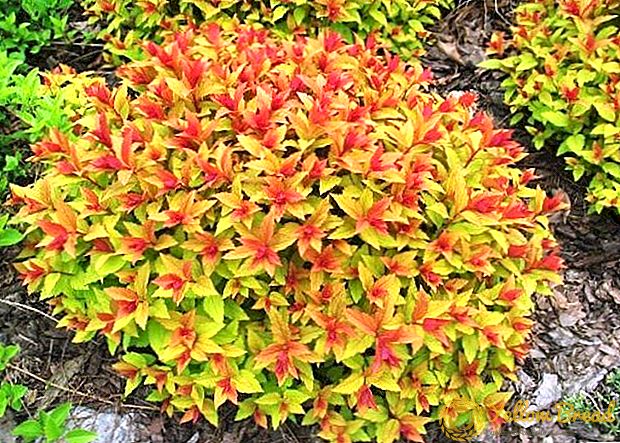
- "Shirobana" (Shirobana) - chameleon shrub up to 80 cm in height. Flowers of various shades from white and pink to bright red, leaves are dark green. The bush grows rounded shape, with a diameter of up to 1 m. The flowering period is July - August.
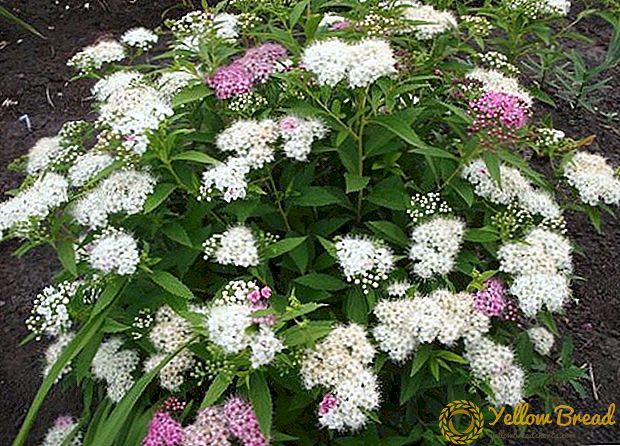
- Crispa (Crispa) is a shrub up to 50 cm tall with dark pink flowers and wavy toothed leaves. When they appear, the leaves have a reddish tinge; in summer they are light green, in the fall they are scarlet or orange-bronze.The crown is spherical.
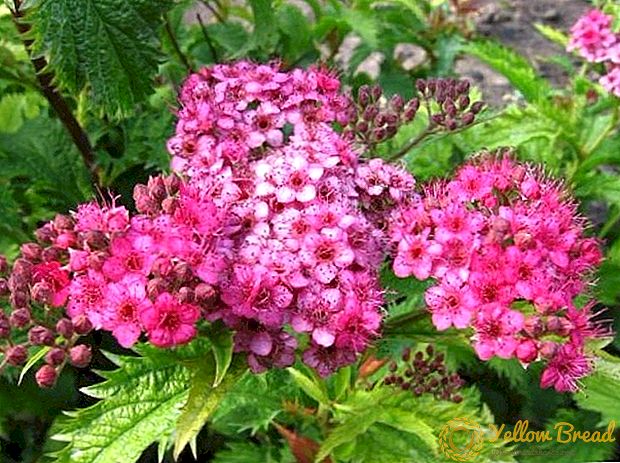
Planting shrubs
Spiraea does not require special care when landing. It is enough to dig a hole to place the roots of the plant, plant the seedlings and cover it with earth. Before planting the root ball is better to soak for 2-3 hours in water.
This plant does not require special fertilizers, enough minimal fertile layer. Spiraea coexists well with different plants, does not inhibit them, does not grow, tolerates a haircut, therefore it is often used as a border or hedge. If you want to plant a hedge from a spirea, then it is better to make it in April. However, thanks to the unpretentiousness of the bush, it can be transplanted throughout the season. But on hot days you will have to water the bush until it is fully engrafted. Root holes can be made with a drill. It takes less power and will look neater.
Proper care of Japanese spirea
The plant is unpretentious. Spirea loves loose fertile soil, moderate watering and bright lighting, although many species grow well in partial shade,
Watering and feeding
 Since the root system of the spirea is shallow, it is imperative that the plants be watered during the dry season. The rate is up to 15 liters per bush 2 times a month.Although the plant is unpretentious, but for its good growth and flowering it is necessary to know what to fertilize with spirea. To feed a plant with complex fertilizers is necessary after pruning. Fertilizer with a mullein and superphosphate affects the plant favorably (10 g of superphosphate per 10 l of infusion of fermented mullein).
Since the root system of the spirea is shallow, it is imperative that the plants be watered during the dry season. The rate is up to 15 liters per bush 2 times a month.Although the plant is unpretentious, but for its good growth and flowering it is necessary to know what to fertilize with spirea. To feed a plant with complex fertilizers is necessary after pruning. Fertilizer with a mullein and superphosphate affects the plant favorably (10 g of superphosphate per 10 l of infusion of fermented mullein).
Pruning plants
Pruning Japanese spireas should be done in order to give the bush a beautiful decorative shape and remove old shoots. Since this plant blooms in summer, the pruning procedure is carried out in the spring. Dry shoots are removed completely, and all the rest is shortened to large buds. This procedure stimulates the growth of young shoots and, accordingly, the process of intensive flowering. Do not be afraid to remove something extra - the plant tolerates pruning. 
Preparing for the winter
Consider what activities need to be held to prepare the Japanese Spirea for the winter. Most plant species are cold-resistant and do not require special preparation for winter. The critical temperature for spirea is -50.0WITH. But if winter promises to be predicted by weather forecasters with little snow and frost, then it is necessary to carry out sanitary pruning of the plant. To do this, remove the weak and diseased shoots.
Before winter, it is necessary to loosen the ground around the plant and insulate the bush. Peat, sawdust, fallen leaves can serve as a heater. It is necessary to warm the bush not completely, but only 15-20 cm from the root system. The newly planted young Japanese spirea bushes require particular warming. If the ends of the shoots are frozen, they must be removed when pruning the spirea in the Japanese spring.
Methods of breeding shrubs
Consider how spiraea multiplies, and what method is most appropriate depending on the circumstances.
Reproduction by division
This method is well suited for older plants. To do this, dig up a bush and divide it with shears into several parts. Each piece should have 2-3 shoots. Slightly shorten the roots, put the plant in the hole, straighten the roots on the sides and cover it with soil. After planting the plants, further care of the Japanese spirea is not time consuming. It is necessary to produce moderate watering before rooting.
Reproduction by cuttings
This method is used from the second half of June to September-October.Cut annual shoots, cut into cuttings (5-6 leaves) and planted in a mixture of river sand and peat (1: 1). The bottom sheet of the cutting is removed, and the rest cut off by half.

The cuttings are covered with glass or film. For a positive result, it is necessary to conduct watering 1 time in 4 days and spraying shoots. Reproduction of spirea with cuttings in the fall is distinguished by the fact that autumn cuttings wrap in fallen leaves, cover with a box and wait until spring. For winter, summer cuttings are also insulated with foliage, and planted in the spring in the spring.
Reproduction by layering
Reproduction by layering refers to a less time-consuming method. For this, in early spring, before the foliage blooms, it is necessary to tilt the lower branches of the plant and sprinkle it with earth in a horizontal position.
The entire season is necessary to water the attached branches, and by the autumn roots will appear on them. As a result, we get an independent plant bush, which can be transplanted in the spring to the right place.
Seed propagation
Since the Japanese spiraea refers to hybrids, its seeds do not preserve its varietal qualities; therefore, it is inexpedient to carry out seed multiplication. This method can be used for non-hybrid varieties. Sow the seeds in the spring in a special box. Shoots should appear in 10 days. Landing in open ground is carried out in 3 months. This method is used if it is necessary to obtain a large number of one-grade spireas.

Japanese Spirea pests and methods of controlling them
Spirea is a resistant plant, but there are pests that can spoil the decorativeness of the bush. These include insects: aphid, spider mite, Rosy moth. Pests most often breed in dry and hot weather. The sheet worm damages the foliage of the plant. This mainly occurs at the end of spring. Aphid - sucks the juice from the young shoots. Mite - cobwebs the shoots of a plant with a web, this leads to premature drying of the bush.The time spent processing chemicals (for example, from a tick - karbofos 0.3%; phosphamide 0.2%; Acrex 0.2%, from aphids and leafworms - Pirimor 0.1%) will not spoil the decorative look. Diseases spiraea is practically not affected.
If your bed is decorated with Japanese spirea, then this information will help to carry out proper and timely care of the plant, and it will thank for abundant flowering and beauty. Due to the large number of species and varieties of spirea, you can choose a plant to your liking






